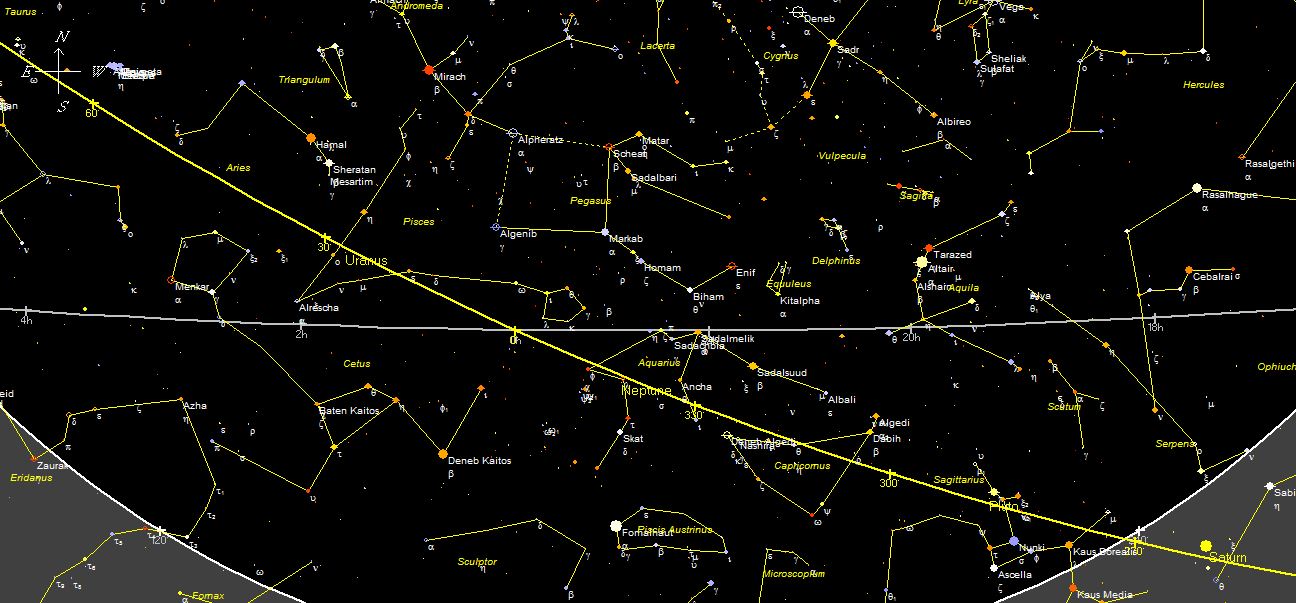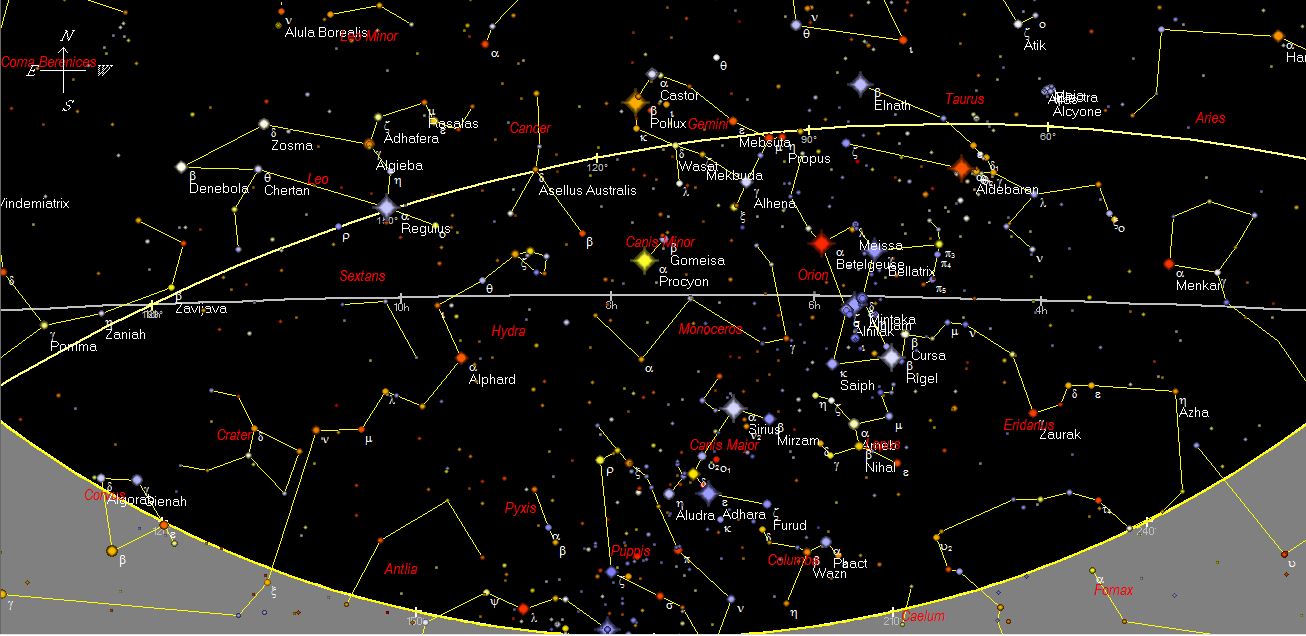
The Sun until mid-February is in Capricorn and then go to the Aquarium. The days continue to grow and in the night sky, towards the south, we can still enjoy Orione and the summer constellations. At the Solstice on June 21st, the Sun is located halfway between Toro and Gemelli, so observing these constellations we realize how high it is on the horizon during the hot summer days. Although after the Substance, from the Latin Sol and sistere- stop, the Sun stops its ascent on the ecliptic and begins to descend, the temperatures continue to be warm in our hemisphere for another couple of months and a half.
Oriented to the south in the evening, we see from the West to the East the fish go down, then the Aries, the Taurus, the Twins, the Cancer and the Lion and the Virgin climb gradually into the night. Orion is still in its full splendor all night long. During the night, new constellations arise in the east, Libra, Scorpio, Ophiuchus and Sagittarius up to the constellation where the Sun is located, which illuminates the day and then hides them all.
Gemini, Castore and Polluce
The constellation of Gemini is a quadrilateral of stars northeast of Orione and east of Toro; the Sun transits you from the end of June to the end of July. It was discovered by Pluto in 1930 and the comet of Halley in 1910. lfaIn the end of December 14th, from the area of the sky of this constellation, the Geminid meteor shower arrived.
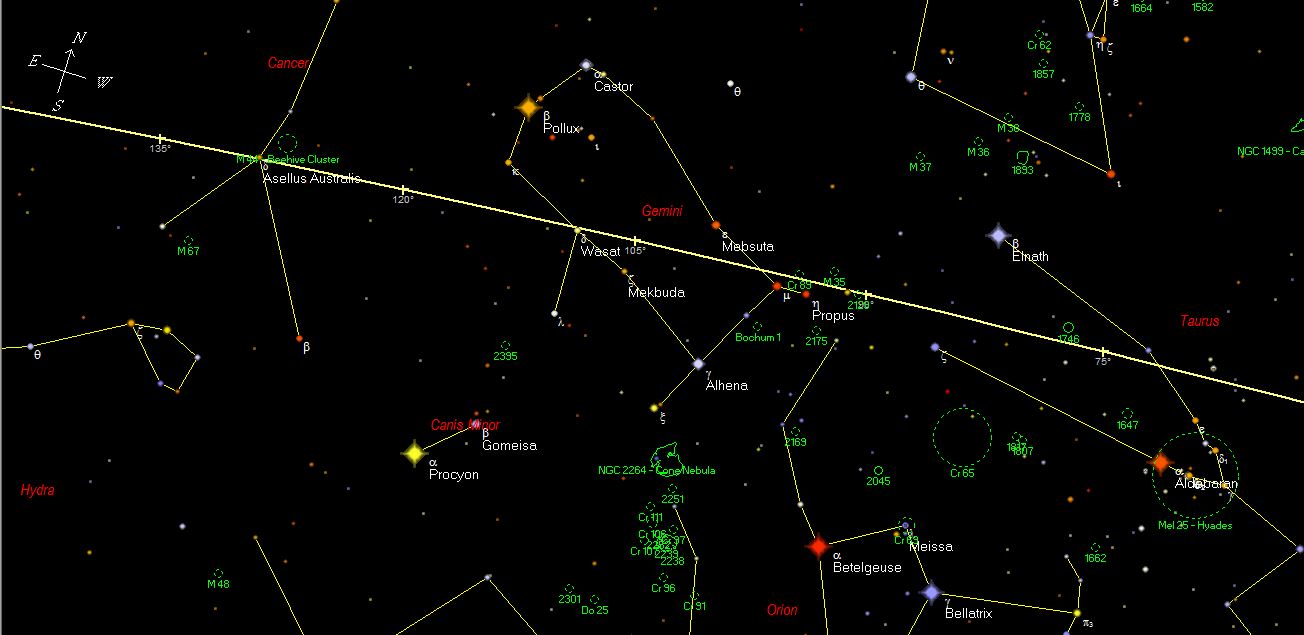
The constellation is characterized by two stars of first magnitude placed nearby: alpha and beta Geminorum. The first one, called Castore, is composed of two white-blue stars and a red dwarf: since these three components are all double, in reality Castore consists of a system of six stars.
The second, Polluce, is a yellow giant a little ‘brighter than Castor: it is one of the cases in which the brightest of the constellation is not alpha, but has remained the ancient nomenclature. The two feet are range, Alhena and me. The Gemini constellation houses very interesting objects.
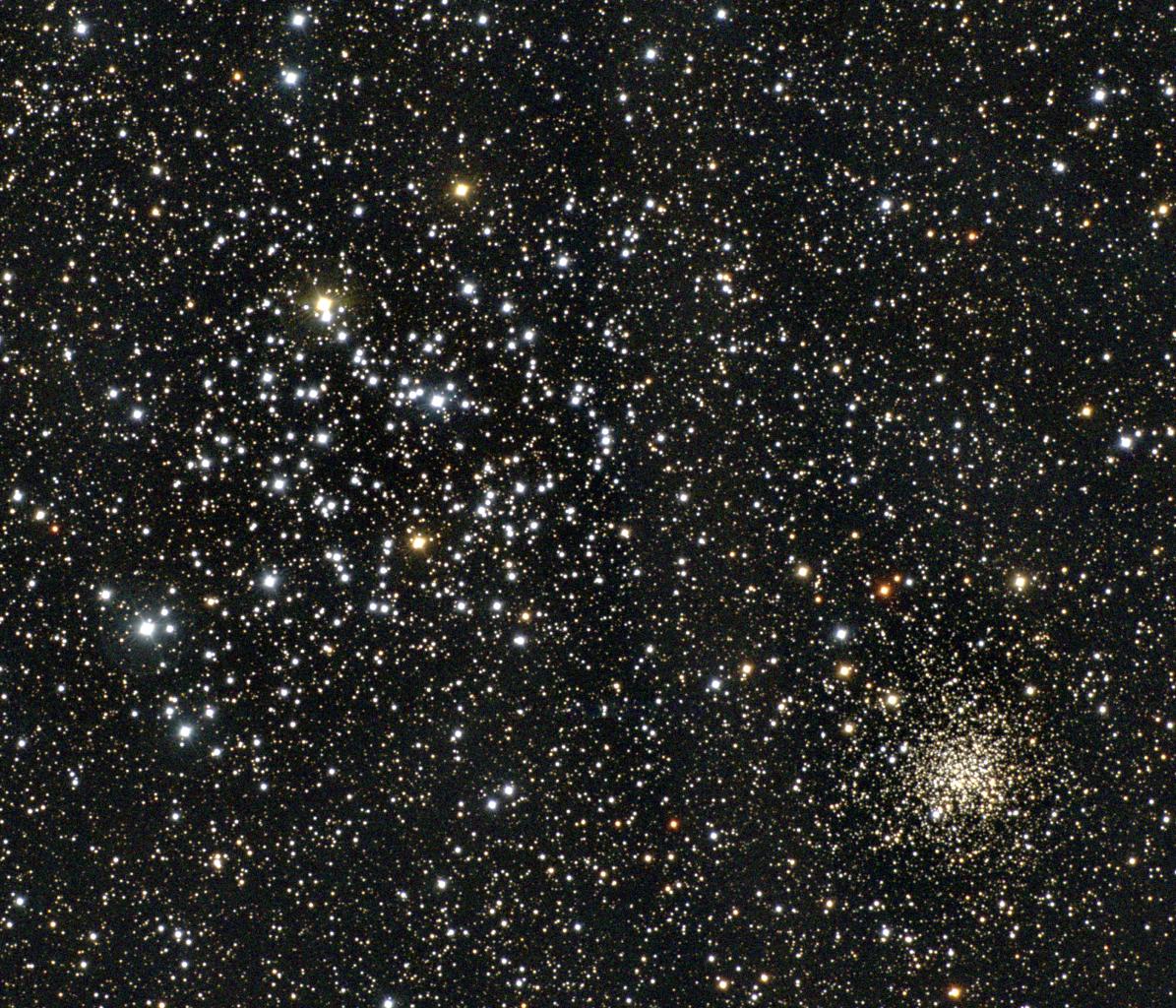
First of all M35, an open cluster located near the border with Taurus, made up of over a hundred stars, scattered in an area as wide as the full moon; it is distant from us 2200 a.l. It is a young mass of 100 million years.
To the south-west, another small open cluster, NGC 2158, much more distant at 16,000 b., Whose age exceeds one billion years. Nice contrast between the two clusters due to their different distance.
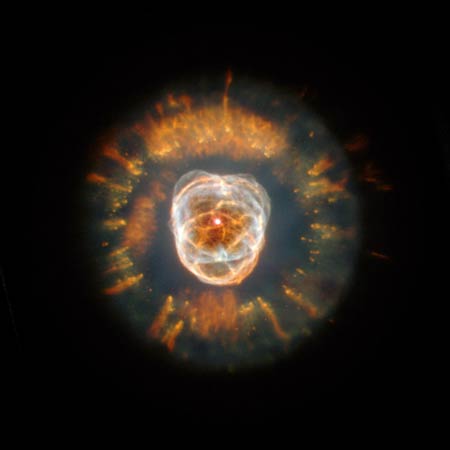
To the east of the delta we find NGC 2392, a planetary nebula, remains of the explosion of a star, which looks like a bluish disk of magnitude at the telescope 8. View with the large telescopes this nebula looks like a face surrounded by a hood: for this reason it is nicknamed Eskimo Nebula or Clown Nebula. It is at 1400 a.l.
Mythology
The constellation represents the twins Castor and Pollux, also known as Dioscuri, that is “sons of Zeus”. Tradition has it, however, that only Pollux was of divine lineage, while Castor was mortal, son of Tindar king of Sparta: both, however, were sons of Leda, wife of Tindaro and lover of Zeus who conceived them the same night lying with both his men.
The twins were very close to each other and joined the Argonauts’ expedition, providing great help on various occasions: Castor, in fact, was a skilled warrior and horse tamer, while Polluce was an unbeatable boxer. Apollonius Rodius, author of the Argonautics, recounts that the twins saved the Argo ship during a storm: for this reason they later became the protectors of the sailors, who believed they saw them during the storms on the trees of the ships in the form of luminous flares ( today identified as Fuoco di Sant’Elmo).
Castor and Pollux at the marriage of the two cousins, also twins, Ida and Linceo, fell in love with their respective promised spouses and came into conflict with them.
Ida struck Castor wounding him to death, while Polluce pierced Linceo with his spear: Zeus intervened, which incinerated Ida with his thunderbolt. Survivor Pollux asked his father to immortalize his brother, but not being able to have this grace, he obtained to be able to share his immortality with his brother: both spent one day in the underworld and one day on Olympus and were placed by Zeus in heaven as a constellation.
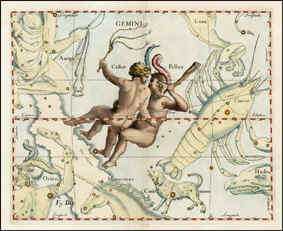
_______________________________________
The maps of the sky are taken from Skymap, software downloadable in demo version from the site http://www.skymap.com
Credits
Author: Lucia Corbo. As a Natural Sciences teacher and expert in didactics of Astronomy, she has collaborated with various magazines curating articles, columns, and multimedia materials. For the Italian Ministry of Education, she edited the cd “Students show the stars” and with N. Scarpel the book “Astronomy on the net”; she promoted and coordinated the first editions of Astronomy Weeks for schools. She has held multiple refresher courses on the didactics of Science and Astronomy and Astronomy courses for students and adults, both in presence and online.
Translation by Maria Antonietta Sessa


